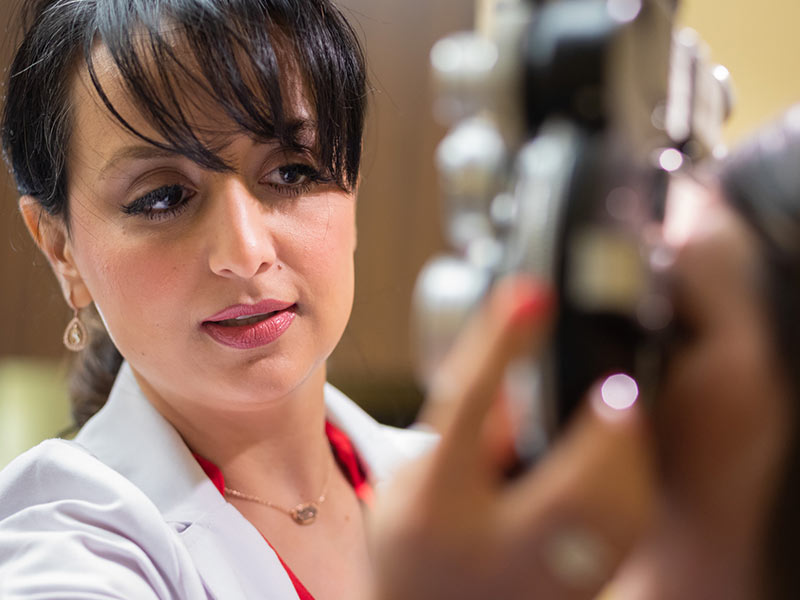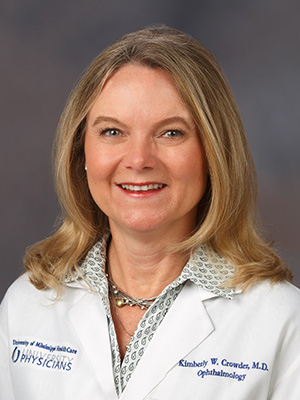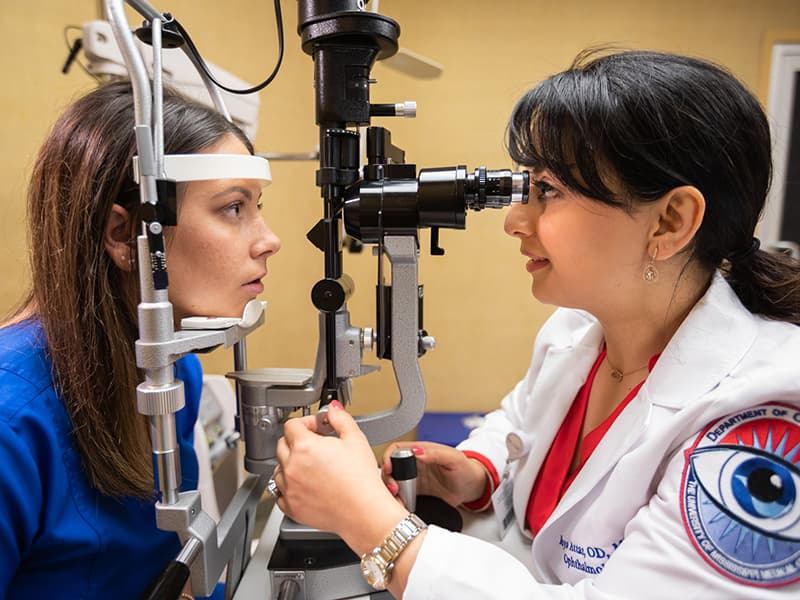UMMC’s first faculty optometrist provides swift access to eye care
Note: This story appears in the October 2018 edition of CONSULT, the monthly e-newsletter published by the UMMC Division of Public Affairs that focuses on cutting-edge clinical advances, innovative educational programs and groundbreaking research occurring at UMMC. To receive CONSULT in your email, visit www.umc.edu/CONSULT to sign up.
After Dr. Roya Attar earned two bachelor’s degrees, her doctor of optometry and a master’s degree, she provided comprehensive eye exams to patients of all ages and launched her avocation for public health.
It wasn’t long, though, before she combined a passion for learning and a love for teaching to better serve her profession. The 2013 graduate of the Rosenberg School of Optometry at the University of the Incarnate Word in San Antonio, Texas, paid it forward.

Attar helped found the Kentucky College of Optometry at the University of Pikeville, Kentucky, in 2014. She served as an assistant professor and director of professional relations, all the while continuing to provide comprehensive optometric services.
“I did a little bit of everything,” said Attar, whose family emigrated to the United States from Iran when she was 6.
While at the University of Pikeville, Attar also obtained her Master of Business Administration from the Coleman College of Business.
Today, she’s trailblazing again. Attar recently became the first optometrist on faculty in the University of Mississippi Medical Center’s Department of Ophthalmology.
“What really attracted me to this position was the opportunity to start something novel in the department,” Attar said. “Equally important is the opportunity to work together with my colleagues in ophthalmology.”

It’s the perfect pairing of the two fields of eye care, said Dr. Kimberly Crowder, professor and chair of ophthalmology.
“She will help our patients by giving them critical access to care,” Crowder said. “For routine exams, she will be much more accessible than the rest of us are.
“If she identifies much more complex medical or surgical problems, she will work with us to get them to the right subspecialist.”
Attar said training to become an optometrist is very different from learning to become an ophthalmologist.
“Following a bachelor’s degree, you can enter optometry school. It’s a four-year program,” she said “The first two years are mainly composed of didactic and clinical teaching, followed by another year of mainly clinical training and seeing patients, and then a one-year externship.
“Upon graduation, some decide to do an optional one-year residency in a specialized area, but it’s not mandatory.”
She said the main difference is that graduates of optometry school can immediately start practicing and seeing patients; graduates of a four-year medical school must complete a residency to specialize in ophthalmology before going out to practice.
Attar grew up in Houston, Texas, and graduated from high school a year early. She received a scholarship to attend the University of Memphis.
“We had some family there, and it worked out,” she said.
She said she decided to join UMMC’s Department of Ophthalmology as “the next step in my career” after enjoying a mix of teaching and clinical duties at the Kentucky school.
“I wanted something that could be equivalent to that,” she said.
Finding a job at UMMC was “serendipitous,” she said.
“I did a search, and I found the position. It was really late at night.”
She submitted her resume and got an auto reply. “The next day, I couldn’t find the posting.”

But within a couple of days, she received a phone call from Crowder, asking if she’d like to do a phone interview.
“I said I’d been an invited speaker for the Mississippi Optometric Association, and that I’d be there anyway.”
Crowder said the pairing of optometry and ophthalmology will give UMMC patients more timely and appropriate care.
“She’s definitely knowledgeable and educated in eye emergencies,” Crowder said. “She can provide the front-door services for patients having an acute problem, and she can make the determination of whether it’s so serious that it might need surgical intervention.”
As a public health advocate, Attar emphasizes eye care is just as important as primary care.
“If I lose a tooth, I can get another tooth that functionally can do the same thing,” she said. “But if I lose an eye, I can’t get a new one. A lot of people don’t go to get their eyes checked until there’s something wrong.”
Attar said she looks forward to working with ophthalmology residents to explore incorporating optometry into their practices.
“I love building relationships,” she said. “I hope to get everyone on campus to get their eye examinations here, quickly and efficiently. I want to elevate our optical services to have more choices on frames and contact lenses.
“Glasses are a great fashion statement, but they’re still a medical device.”
She said she also would like to begin a low-vision clinic for patients with challenges that include macular degeneration and eye trauma.
“They can still be functional,” she said. “One service really lacking in this area is to address the effect of diabetes on the eyes. We are in the diabetes belt of the country, and Mississippi is the buckle of the belt.”
Crowder said she and Attar “definitely see eye to eye.”
“We want to make sure that all of our patients are cared for properly and in a timely fashion, and to have the products they need and not to have to go outside of UMMC to get the frames they’re interested in,” Crowder said. “We want to build better relationships with all of the optometrists in the state and community.
“She’s a very smart woman who understands the importance of this.”



